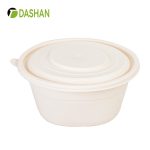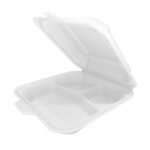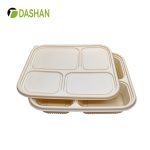Quick Summary
This article covers the top 5 sustainable packaging trends for 2025, focusing on biodegradable materials, minimalist design, smart packaging, and plant-based alternatives. It highlights the role of DASHAN in offering eco-friendly corn starch-based solutions to meet growing consumer demand for green packaging.
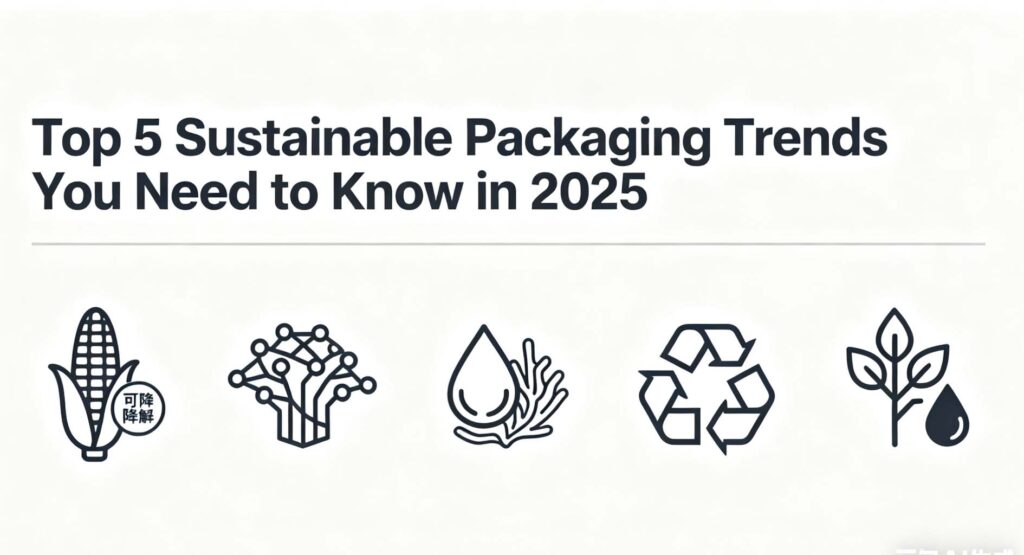
1. Introduction
As global awareness of environmental issues continues to rise, businesses across industries are prioritizing sustainability. The packaging industry, in particular, has seen a significant shift toward eco-friendly packaging solutions, with companies seeking alternatives to traditional plastic packaging. In 2025, sustainable packaging will not just be a trend but a necessity. With increasing pressure from consumers and regulations, businesses must adopt sustainable practices to stay competitive in the market.
In this article, we explore the top five sustainable packaging trends for 2025, focusing on innovations in biodegradable materials, packaging design, and the regulatory landscape. We will also highlight how companies, including DASHAN, are leading the way in adopting these trends to meet consumer demand and reduce their environmental impact.
2. Trend 1: Biodegradable and Compostable Packaging Solutions
Biodegradable and compostable packaging has been gaining momentum for years, but in 2025, it is set to become a mainstream solution. Consumers are increasingly aware of the environmental impact of plastic waste, and as a result, many companies are turning to materials like corn starch, PLA (polylactic acid), and PHA (polyhydroxyalkanoates) to create biodegradable and compostable packaging options.
Why It Matters:
Biodegradable packaging breaks down more quickly than traditional plastic and, when composted, turns into nutrient-rich soil that supports agriculture. This trend helps reduce plastic pollution, particularly in oceans and landfills, and provides a more sustainable alternative for packaging industries.
At DASHAN, we offer a variety of corn starch-based packaging solutions that are both biodegradable and compostable. These products provide an eco-friendly alternative to single-use plastics in food packaging, catering to a growing demand for greener solutions in the foodservice industry.
2025 Outlook:
In 2025, we can expect further improvements in the quality and affordability of biodegradable materials. As research advances, biodegradable packaging will become more cost-competitive and versatile, making it accessible to a wider range of industries, including e-commerce, cosmetics, and pharmaceuticals.
3. Trend 2: Minimalist and Eco-Conscious Packaging Design
Packaging design is evolving to not only be functional but also eco-conscious. In 2025, companies will continue to prioritize minimalist packaging designs that reduce material use while maintaining the integrity of the product. This trend includes the elimination of excess packaging and the adoption of lightweight materials that reduce both production costs and environmental impact.
Why It Matters:
Minimalist packaging uses fewer resources, leading to less waste and a reduction in the carbon footprint of packaging production. It also appeals to consumers who are becoming more conscious of over-packaging and its environmental effects.
DASHAN embraces this trend by offering streamlined packaging solutions for food products, ensuring that our corn starch-based containers not only meet environmental standards but also prioritize functional and sustainable designs.
2025 Outlook:
As consumer preferences continue to evolve, brands will increasingly embrace minimalist packaging, focusing on reducing the volume of materials used. More sustainable packaging designs will incorporate recyclable, compostable, or biodegradable materials, further reducing the impact of packaging on the environment.
4. Trend 3: The Rise of Recycled and Recyclable Packaging
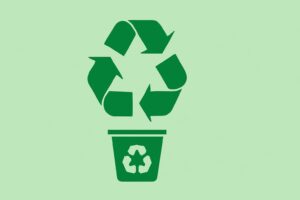
The push for circular economy solutions is expected to intensify in 2025. Companies will be focusing on using recycled materials in their packaging to reduce dependence on virgin resources. This includes not only post-consumer recycled (PCR) materials but also the use of recyclable packaging that can be easily processed and repurposed at the end of its life cycle.
Why It Matters:
Recycling helps reduce the amount of waste that ends up in landfills and supports the creation of a more sustainable packaging ecosystem. By using recycled content, brands are not only minimizing their environmental footprint but also contributing to the growing demand for sustainable materials.
At DASHAN, we are committed to supporting the circular economy by incorporating recycled content in our packaging solutions and using materials that are fully recyclable. Our corn starch packaging solutions also contribute to a reduced carbon footprint by being both biodegradable and recyclable.
2025 Outlook:
By 2025, we will see a larger shift toward using high-quality recycled materials in packaging. More companies will adopt closed-loop systems that allow products to be reused, recycled, or composted, contributing to a more sustainable and circular economy.
5. Trend 4: Smart and Interactive Packaging
In 2025, packaging will evolve beyond its functional role to become an interactive and informative tool. Smart packaging, which integrates technology such as QR codes, RFID (radio-frequency identification), and NFC (near-field communication), is increasingly used to provide real-time information about products, including their sustainability credentials and the recycling process.
Why It Matters:
Smart packaging enhances the consumer experience by providing transparency and accountability. It allows consumers to access information about the environmental impact of packaging, the product’s origin, and how to recycle or dispose of it properly. This trend aligns with the growing desire for transparency in the products consumers buy.
DASHAN is already exploring ways to incorporate smart packaging into our corn starch products, helping consumers make informed decisions about sustainability and waste management.
2025 Outlook:
Smart packaging will become more widespread, with brands using technology to communicate the sustainability of their products and packaging directly to consumers. As consumers demand greater transparency, smart packaging will play a critical role in bridging the gap between brands and their environmentally conscious customers.
6. Trend 5: The Continued Growth of Plant-Based and Alternative Materials
The use of plant-based and alternative materials in packaging is on the rise. By 2025, we can expect to see even more innovations in materials derived from plants, fungi, and algae, which offer environmentally friendly alternatives to plastic. Materials like mushroom packaging, seaweed packaging, and hemp-based materials will continue to gain traction.
Why It Matters:
Plant-based materials are renewable and biodegradable, making them an ideal solution for sustainable packaging. These materials have a lower environmental impact compared to fossil-fuel-based plastics and contribute to reducing carbon emissions and plastic waste.
DASHAN has been at the forefront of this trend by providing sustainable corn starch-based products. Our commitment to plant-based materials helps reduce plastic use and offers a compostable alternative for industries looking to go green.
2025 Outlook:
In the coming years, plant-based and alternative materials will continue to evolve, with more biodegradable and compostable options available for different industries. These innovations will play a crucial role in helping brands reduce their reliance on plastic while still offering functional and affordable packaging solutions.
7. Conclusion
Sustainability will remain at the forefront of the packaging industry in 2025. As consumers, businesses, and governments push for more eco-friendly solutions, the packaging industry will continue to evolve. From biodegradable and compostable packaging to minimalist designs and smart packaging technologies, the trends of 2025 highlight the growing importance of sustainability in packaging.
At DASHAN, we are proud to be part of this movement, offering corn starch-based products that provide sustainable, biodegradable alternatives to plastic packaging. As we look ahead, it’s clear that the future of packaging will be green, and those who embrace sustainable practices will lead the way in the coming years.
FAQ
-
What is biodegradable packaging?
Biodegradable packaging breaks down naturally in the environment, leaving no harmful residues. It is typically made from plant-based materials like corn starch, making it more sustainable than plastic. -
Why is minimalistic packaging important?
Minimalist packaging reduces material waste, lowers production costs, and minimizes the environmental impact of packaging production and disposal. -
How does smart packaging work?
Smart packaging incorporates technology such as QR codes or RFID to provide real-time product information and enhance the consumer experience. -
What are plant-based packaging materials?
Plant-based materials like corn starch, mushroom, and seaweed are renewable, biodegradable, and provide eco-friendly alternatives to traditional plastic packaging. -
What role does recycled packaging play in sustainability?
Recycled packaging reduces the demand for virgin materials, helps divert waste from landfills, and supports a circular economy by reusing materials.

